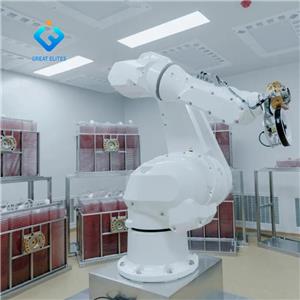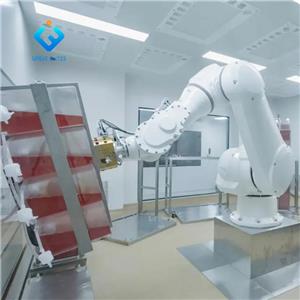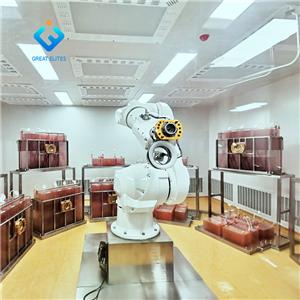What are the commonly used equipment for cell culture?
1. Ultra clean workbench
At present, the vast majority of cell laboratories use ultra clean workbenches to achieve aseptic operation, with simple operation, convenient installation, small space occupation and good purification effect. Anhui Renhe Purification introduces two main types of super clean workbenches - side flow type (vertical type) and outflow type (horizontal laminar flow type). The working principle is generally that the indoor air is initially filtered by the coarse filter, pressed into the static pressure box by the centrifugal fan, and then fine filtered by the high efficiency air filter. The resulting clean air flow passes through the sterile area at a certain uniform sectional wind speed, thus forming a dust-free and sterile working environment with high cleanliness.
(1) Side flow worktable: the airflow after air purification flows from left or right to the opposite side through the worktable, or from top to bottom or from bottom to top, forming an airflow barrier to keep the working area sterile. The worktable structure is closed;
(2) Outflow worktable: the purified air flows towards the operator, so the foreign air flow will not be mixed into the operation. The worktable structure is open, but the experimental operation of harmful substances is unfavorable to the operator. The ultra clean worktable should be regularly checked for cleanliness by relevant departments. The cleanliness of the ultra clean worktable that meets the requirements should reach Grade 100, and the particle size should be tested with a dust particle counter ≤ 5 μ The number of dust particles in m shall not exceed 3.5/L; The air flow shall be controlled within 0.75-1.0m3/s; The average number of bacterial colonies is less than 1, and the filter needs to be replaced if necessary according to the sterility.
2. Microscope
Inverted microscope is a necessary equipment for daily work of cell culture laboratory, which is mainly used for daily understanding of cell growth and observing whether there is pollution. If the funds permit, it is recommended to use a high-quality phase contrast microscope, anatomical microscope, fluorescent microscope, video recording system or time-lapse film shooting device equipped with a photographic system to take pictures and record cell growth at any time.
3. Incubator
Like cells in vivo, cells cultured in vitro need to survive at a constant temperature. Generally, the optimal growth temperature is 37 ℃, and the temperature difference should not exceed ± 0.5 ℃. When the temperature rises by 2 ℃, it becomes unfavorable for cell survival, and cells will die soon when the temperature reaches above 40 ℃. Therefore, thermostatic incubator and CO2 incubator that can accurately control temperature are the best choice.
(1) Constant temperature incubator: water proof or transistor type automatic temperature control incubator shall be selected, which has high sensitivity and stable temperature control. The general thermostatic incubator is cheaper, but its disadvantage is that it is only suitable for closed cultivation.
(2) CO2 incubator: At present, most cell culture rooms have been widely used. The advantage of the CO2 incubator is that it can provide a certain amount of CO2 (the common concentration is 5%) required for cell culture, and it is easy to stabilize the pH of the culture medium, which is suitable for open or semi open culture. When using the culture bottle, in order to keep the inside of the culture bottle ventilated with the outside world, the bottle cap can be slightly loosened. In order to avoid cell pollution, when using this culture method, the air in the culture box must be kept clean, and it needs to be regularly disinfected with ultraviolet radiation or alcohol. At the same time, the tank containing sterile distilled water should be placed in the culture box to prevent the evaporation of the culture solution, and keep the relative humidity in the box at 100%.
(3) Cell culture consumables: culture dishes, plates or bottles can be used to culture cells.
4. Oven (drying oven)
Some instruments and vessels used for cell culture must be dried before use, and glassware must be sterilized with dry heat. During dry heat disinfection, the temperature in the oven shall generally reach more than 160 ℃, and the air blast oven is usually used. Its advantages are uniform temperature and good effect, while its disadvantages are slow heating process. When heating up, it is not allowed to heat up before blowing, but the blowing and heating should start at the same time. When the temperature reaches 100 ℃, the blowing should be stopped. Care should be taken to avoid burning the paper or cotton wrapping the utensils. The burnt debris can affect the growth of cells. After disinfection, the box door cannot be opened immediately to avoid breakage of glassware due to sudden cooling. The door can only be opened after the temperature naturally drops below 100 ℃.
5. Water purification device
The quality of water for cell culture is high. The water for preparing cell culture, cell culture related liquid and water for cleaning cell culture utensils must be strictly purified in advance. At present, there are a variety of purification methods combined to make the use of pure water devices that can purify ordinary water into pure water and ultrapure water very flexible and convenient. They can be wall mounted, desktop, equipped with water storage tanks, or directly used with a liquid separation gun. They can also be configured with sterilization functions according to the requirements of various types of experimental water, effectively removing DNA enzymes, RNA enzymes, protease, etc., as well as ultrafiltration pure water devices that can effectively remove heat sources and endotoxin.
6. Refrigerator
The necessary equipment of cell culture laboratory shall be dedicated, and shall not store volatile, inflammable and other substances harmful to cells, and shall be kept clean. Generally, it includes ordinary refrigerators, low-temperature refrigerators and ultra-low temperature refrigerators.
Ordinary refrigerator: It can store culture liquid, normal saline, Hanks liquid reagent and other culture articles, and can store tissue samples for a short time.
-20 ℃ low temperature refrigerator and ultra-low temperature refrigerator: used to store preparations that need to be frozen to maintain biological activity and need to be stored for a long time, such as enzymes, serum, etc.
7. Cell cryostat
The liquid nitrogen containers commonly used in the reservoir can be divided into different types and specifications according to the use needs. Three factors need to be considered when selecting a liquid nitrogen container: volume size, easy access and use, and liquid nitrogen volatilization. The size of the liquid nitrogen container is generally 25-500L, which can store about 250-15000 1ml cryotubes. The lowest temperature of liquid nitrogen can reach - 196 ℃, so pay attention to avoid frostbite when using. Since liquid nitrogen is volatile, it is necessary to observe the amount of remaining liquid nitrogen and supplement it in time to avoid cell damage or death due to insufficient liquid nitrogen. At present, there are many intelligent cell cryopreservation containers to choose from. Liquid nitrogen containers equipped with electronic controllers can realize automatic cryopreservation; The liquid nitrogen level and sample temperature can be monitored to ensure that the sample temperature is always at the set temperature point; Alarm system can be configured to alarm in case of liquid nitrogen level, temperature, battery, voltage, power supply and other abnormalities; At the same time, a hot gas bypass system is provided to prevent warm air higher than - 130 ℃ from entering the liquid nitrogen tank, so as to protect the sample more effectively and prevent the temperature rise in the container. In addition, the liquid nitrogen supply tank can be selected to supplement liquid nitrogen to the storage tank through the connecting pipe to ensure the sample safety.
8. Centrifuge
In cell culture, centrifugation is usually used to prepare cell suspension, adjust cell density, wash and collect cells. 4000 rpm desktop centrifuge is generally configured; To do cell sedimentation, 80-100G centrifugal force is required, because excessive centrifugal force will damage cells. According to different requirements, there are large capacity, adjustable temperature centrifuges, high-speed centrifuges, low-temperature freezing centrifuges and other more functional centrifuges to choose from.
9. Balance
Precision balance and analytical balance are commonly used. The accuracy of the analytical balance is generally 0.1 mg, 0.01 mg and 0.001 mg. Generally, a suitable balance is selected according to the sampling volume and accuracy requirements: a balance with an accuracy of 0.1 mg should be selected when the sampling volume is greater than 100 mg; The sampling amount is 100-10mg, and a balance with an accuracy of 0.01mg is selected; A balance with an accuracy of 0.001 mg should be selected for the sampling volume of 10 mg. The balance needs to be calibrated regularly. The balance with automatic calibration function can be selected for easy maintenance. When using the balance, pay attention to cleanliness, and avoid corrosive powder and liquid directly contacting the weighing platform.




